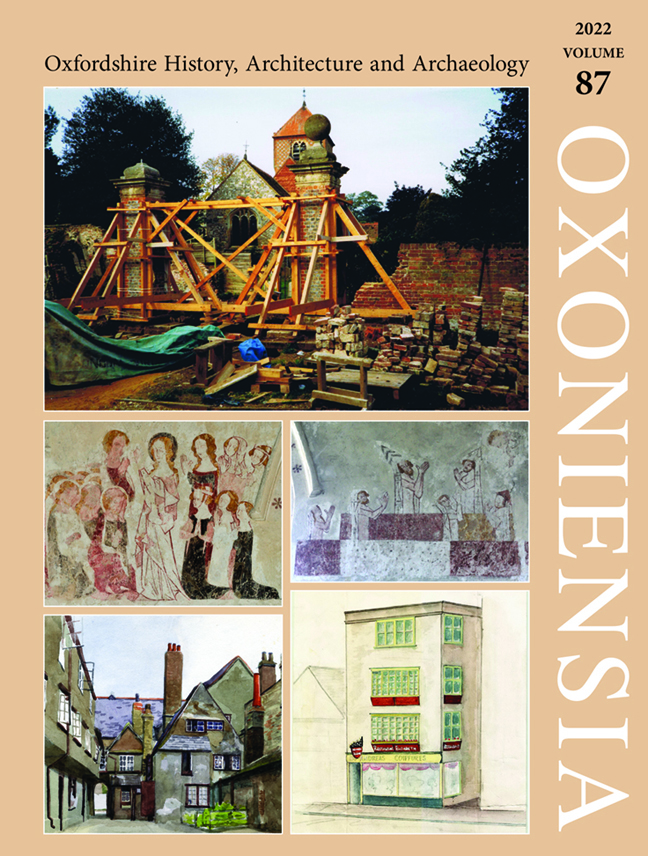Anne Dodd, Stephen Mileson and Leo Webley (eds.), The Archaeology of Oxford in the 21st Century: Investigations in the City by Oxford Archaeology, 2006–16
Published online by Cambridge University Press: 17 February 2024
Summary
To launch a book as ‘Occasional Paper, 1’ is a bold step by the OAHS (the ‘A’ surely still for ‘Architectural’ not ‘Archaeological’ as on page iv – though the adjective might be a useful addition), not least because it creates an expectation for other publications to come. This first volume consists largely of excavation reports, which if published in Oxoniensia might by their number have led to accusations that articles on other topics were being driven out – a criticism made while I was editing the journal in the 1970s, although generous subsidising by the Ancient Monuments Division meant that I never had to turn down a paper for financial reasons.
That autobiographical aside was prompted partly by Tom Hassall's article, which is one of three that are not excavation reports. His retrospective survey of the last fifty years shows how excavation became formalised, a change tellingly illustrated here by contrasting photographs. But it also still needs the goodwill of supporters, and the names of many local government councillors and staff, as well as of university personnel, are accordingly remembered. Tom Hassall, modestly, does not mention one of his own major contributions: the lectures he gave and organised, which made Oxford's archaeology much more accessible to a wider public.
The other two introductory papers focus on some of the archaeological discoveries of the last half-century. David Radford and Anne Dodd both show how medieval Oxford may have been shaped by prehistoric earthworks and ditches. Romano-British evidence found close to the area of the medieval town does not indicate that it had an urban background, but there was more activity in the vicinity in the seventh to ninth centuries than had been previously realised; not only near the crossing of the Thames in Grandpont, but also around a possible minster at or near St Peter-in-the-East. A third focus was in the Beaumont Street area. This picture is consistent with growing evidence generally for the prosperity of the Midlands and eastern England during the ‘Mercian Supremacy’, and raises further discussion about the dating of Oxford's enclosure banks and ditches; both a ditch excavated before the first Westgate development in the 1960s and the bank at New College may predate the late ninth- or early tenth-century ‘Burghal Hidage’ documents which include Oxford in their lists.
- Type
- Chapter
- Information
- Oxoniensia , pp. 474 - 476Publisher: Boydell & BrewerPrint publication year: 2022

